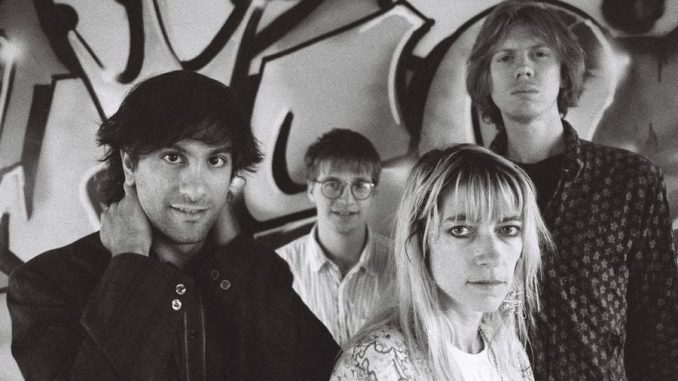
Breaking: After 20 years of leaving Sonic Youth band, Legendary Singer Returns in with…
In spring 1996, in the first flush of my serious Sonic Youth fandom, I recall excitedly talking to a friend in Algebra II about “Schizophrenia,” the first song on Sonic Youth’s 1987 album Sister. A third classmate overheard me, giggled, and then asked a question logical to a mainstream music fan: “Why would anyone sing a song about schizophrenia?”
What I was unable to articulate in my answer is that schizophrenia is less the subject of the song than an opaque inspiration for it. The song begins with the speaker visiting his friend whose sister is mentally ill. Thurston Moore, guitarist, songwriter, and singer, inhabits a character who seems both drawn to the sister and scared of her: “Her light eyes are dancing / she is insane.” The sister, too, frames her relation to her disorder with surprising ambivalence—Moore’s speaker quotes her as saying “schizophrenia / is taking me home.”
The appeal of “Schizophrenia” is that it creates compelling structures and then jettisons them, ripping through moods that feel like they should last. They could stay in the part I always hum after listening to it—the near-pop of the first minute and a half—but something else beckons, builds, appears, and makes way for something else. I don’t know what schizophrenia feels like, but the music in “Schizophrenia” imagines an encounter with it engendering an experience without limits or guidelines. Sonic Youth did this over and over: a song starts one way, and then the whole thing falls apart, and then it falls apart again but differently.
To see just how much Sonic Youth mastered moving between order and disorder, watch them on a show called Michelob Presents Night Music. Appearing on the program in 1990, they played the relatively straightforward song “Silver Rocket” from their breakthrough album Daydream Nation (1988). On the show, “Silver Rocket” begins like it sounds on the album, lean and taut, the chorus a quick, two-line summary of the song’s style: “Silver rocket / burning a hole in your pocket.” They run through the three verses and choruses in just over 90 seconds, and then they erupt out of their physical formation and out of musical alignment. Moore plunges his guitar neck down in front of his amps and shakes it, as if to urge the feedback forward; Kim Gordon’s bass turns into a third, screechy guitar; Lee Reynaldo kneels, turns a switch, and starts to rip. The song’s lyrics, melody, and rhythm are long gone. It seems certain that we’re going to hear this weirdness and discordance until they put the guitars down and someone says, “Sonic Youth, everybody.” Two minutes into the jam, Reynaldo moves over to Moore, and for a second, bits of the “Silver Rocket” melody return. Then Moore falls down, and it feels like that hint of the melody might’ve been just an echo. At 4:01, all at once, without any clear signaling, they’re all back in the song, as if someone flipped a switch.

Not every Sonic Youth song or performance felt like this. Their signature song, “Teenage Riot,” is indie pop through and through; a much later tune, “Incinerate,” could almost fit on classic rock radio. But they were at their most characteristic when the sounds they produced and the energies they wielded felt uncontainable by any traditional structure.
The mainstream story of rock in the early 1990s was one of youthful ballast replacing decadence. Guns-N’-Roses went from the fierce aggression of Welcome to the Jungle to the glorious, bloated ballads of Use Your Illusion, complete with their supermodel wives and ex-wives and their expensive, artsy videos. Nirvana and Pearl Jam were flannel-clad upstarts, wielding anger and authenticity. Nationwide attention came for rock bands who didn’t care about selling out stadiums, and canned corporate crap (which Guns-N’-Roses, I assert, definitely was not) did.
In this landscape, Sonic Youth occupied a space with a number of other highly respected bands—Dinosaur Jr., Mudhoney, the Screaming Trees, Bikini Kill, Sleater-Kinney, and Pavement—who could be roughly grouped with the multiplatinum grunge acts by sound but consistently veered in directions that the mainstream, it turned out, couldn’t admit. These bands had significant followings and would occasionally headline or coheadline the big festivals, but they remained committed to exploration, variety, rage, and weirdness. Sonic Youth signed with Geffen, a major label, in 1990, meaning they weren’t averse to the kind of exposure that Nirvana and Pearl Jam experienced. Talking about the politics surrounding major labels in his recently published memoir, Sonic Life, Moore complains that the idea of “selling out,” a derogatory term commonly lobbied at anyone who took corporate money, implied that bands who signed with these companies “were depicted as though they had no agency, stupidly falling into the traps that major labels had set for them. We were not that band.”
Leave a Reply